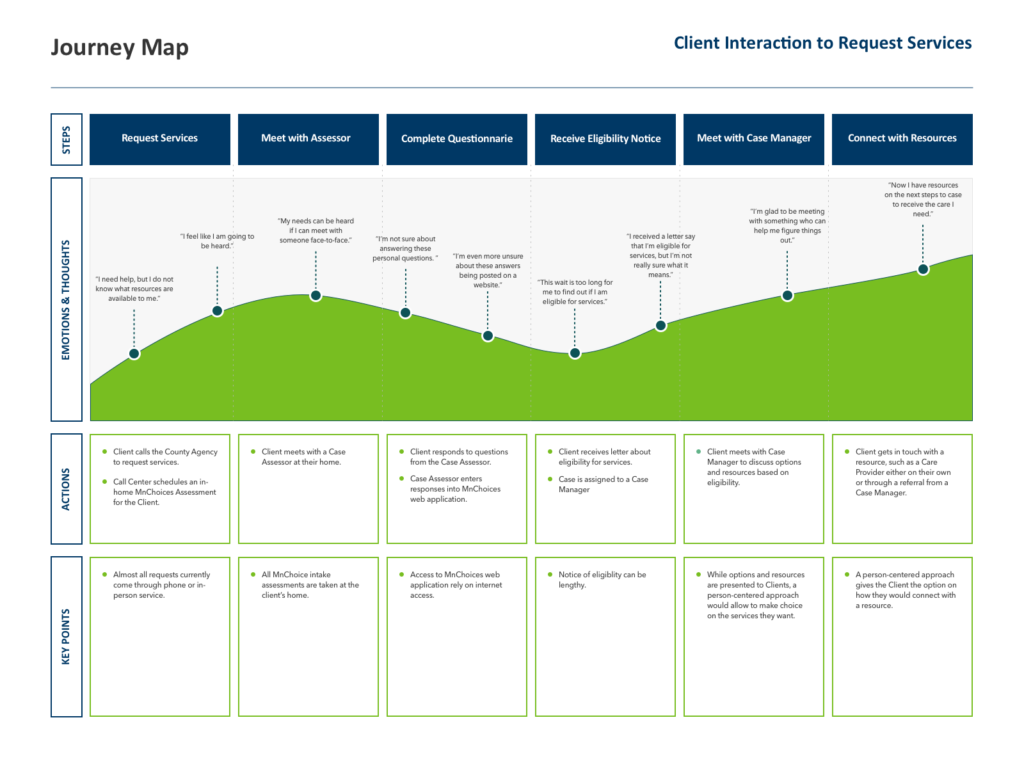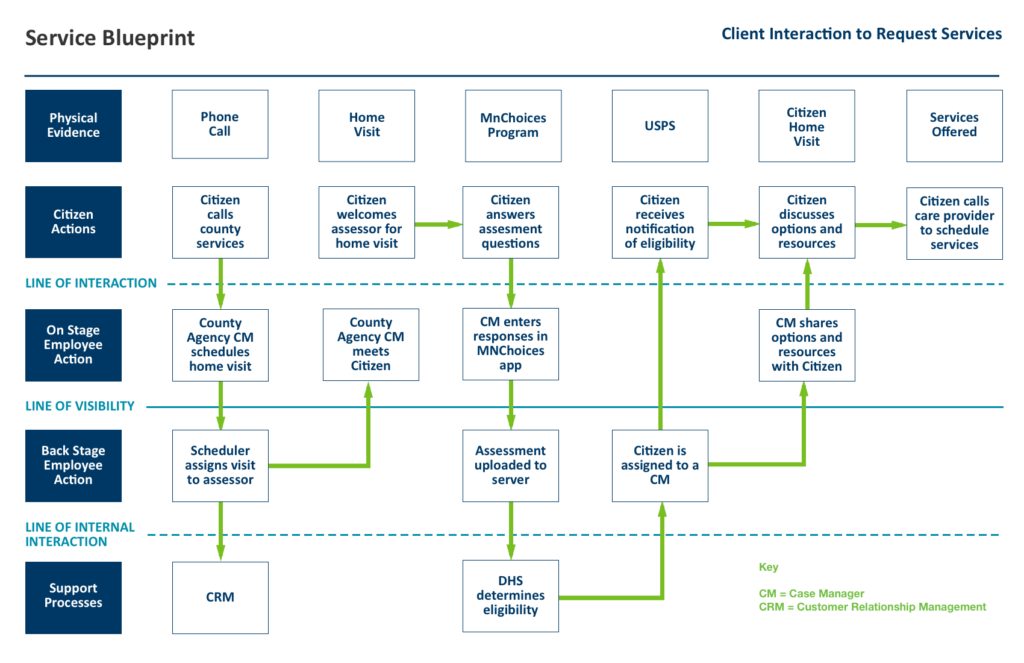The Minnesota Department of Human Services (DHS), one of the largest consumers of state technology services in Minnesota, has made “improving the user experience” an explicit component of their 2018-2020 strategic plan for modernization. Internal leaders at DHS and Minnesota IT Services (MNIT) are looking to communicate and demonstrate to DHS employees and partners what it means to be “person-centered” in order to integrate and simplify existing programs and technologies.
In order to successfully undertake this massive culture change, DHS wants to create a set of actionable resources that can be leveraged by DHS leadership, technology specialists, case managers, and care practitioners to support the development of experiences that better meet the needs of the citizens they seek to serve. Modeling DHS’s definition of a “person-centered approach”, these tools will help DHS employees and partners envision and employ new ways to serve their users in a more meaningful way. Advanced tools may even propose mechanisms for training staff in ways of including users in the evaluation of the proposed changes.
The Problem
Minnesota IT Services (MNIT) and the Minnesota Department of Human Services (DHS) want to implement a person-centered approach to all of their service offerings so that they can serve the needs of people who need help.
Methods
- Interviews
- Directed Storytelling
- Journey Maps
- Service Design
- Prototype
Tools
- Sketch
- Pages
Summary of Role
- Member of four-person UX design team
- Secondary research of citizen-centered experience
- Interview service staff and support
- Design maps and diagraps for report
Journey Map

Service Blueprint

Next Steps
MNIT will use our findings and recommendations, in conjunction with their established personas, to implement a person-centered approach in DHS service offerings by enacting changes one department at a time.